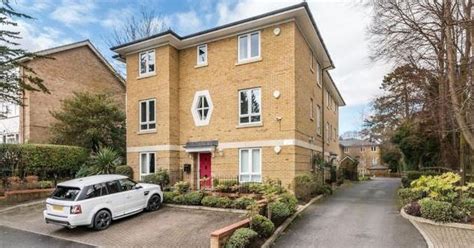
The Cheapest District in England to Buy a House
Welcome to our latest blog post, where we delve into the world of housing in England’s cheapest district. In this post, we will provide you with an overview of this budget-friendly area, exploring the factors that influence house prices in the district. Additionally, we will discuss the average cost of houses, upcoming developments in the area, and provide valuable tips for those looking to buy a house in this district. Whether you’re a first-time buyer or simply seeking a more affordable housing option, keep reading to discover all you need to know about this hidden gem of a district.
Overview of the cheapest district in England
The cheapest district in England is a topic of interest for many potential homebuyers. Everyone wants to find an affordable place to live, especially as housing prices continue to rise. In this blog post, we will provide an overview of the cheapest district in England, including the factors influencing house prices in the area, the average cost of houses, upcoming developments, and some tips for buying a house in the district. So, let’s dive into the details!
When considering the cheapest district in England, various factors come into play that influence house prices. Location plays a significant role in determining property prices. Some districts may be more affordable than others due to their distance from major cities or lack of amenities. Other factors that affect house prices are the size and condition of the properties available in the district. In general, smaller properties or those in need of renovation tend to be cheaper compared to larger, fully upgraded houses.
According to recent data, the average cost of houses in the cheapest district in England is significantly lower compared to other areas. While house prices fluctuate over time, this district offers a more affordable housing market, making it an attractive option for first-time buyers or individuals on a limited budget. The lower average cost of houses allows potential homeowners to enter the property market without stretching their finances too thin.
- Location
- Size and condition of properties
- Amenities and proximity to major cities
Upcoming developments in the area are also crucial to consider when looking at the cheapest district in England. New infrastructure projects, such as improved transportation links or the development of commercial centers, can have a positive impact on property prices in the long run. It’s worth researching any planned developments or regeneration projects that may increase the value of homes in the district.
| Tip 1 | Research the district: Before making any purchasing decisions, it’s essential to thoroughly research the district. Look at the local amenities, crime rates, and transport links to ensure it suits your lifestyle and needs. |
|---|---|
| Tip 2 | Consider the future: While focusing on affordability is important, it’s also wise to consider the future potential of the district. Look for signs of growth, such as upcoming developments or new businesses moving into the area. |
| Tip 3 | Get expert advice: Consult with a local real estate agent or property expert who can provide valuable insights into the cheapest district in England. Their expertise can help you make informed decisions and navigate the property market more effectively. |
In conclusion, understanding the overview of the cheapest district in England is crucial when considering purchasing a property. While affordability is a significant factor, it’s also important to look beyond just the price tag. Factors such as location, property size and condition, upcoming developments, and future potential all play a role in determining the value of homes in the district. By doing thorough research and following the provided tips, potential homebuyers can make informed decisions and find the perfect affordable home in the district.
Factors influencing house prices in the district
When it comes to the factors that influence house prices in a particular district, there are several key elements to consider. These factors can vary depending on the location, local market conditions, and demand for housing in the area. Understanding these factors can help both buyers and sellers make informed decisions in the real estate market.
One of the primary factors that can influence house prices in a district is the location itself. Properties that are located in desirable areas with good schools, low crime rates, and convenient access to amenities such as shops, restaurants, and public transportation tend to have higher prices. On the other hand, houses located in less desirable areas or those with compromised accessibility might have lower values.
The condition and age of the houses in the district also play a significant role in determining their prices. Properties that are well-maintained, recently renovated, and equipped with modern amenities are more likely to have higher prices compared to those that are older and require extensive repairs or updates. Additionally, the size and layout of the houses, as well as the quality of the materials used in construction, can also impact their values.
Local market conditions and demand are essential factors to consider as well. When there is high demand for housing in a particular district, such as a shortage of available properties or a growing population, house prices tend to rise. Conversely, if there is an oversupply of houses in the area or a decline in population, prices may decrease. It’s also important to keep an eye on economic indicators, such as employment rates, interest rates, and inflation, as these can influence buyer behavior and impact house prices.
- Location of the houses
- Condition and age of the properties
- Local market conditions and demand
- Economic indicators
| Factors Influencing House Prices in the District | |
|---|---|
| Location | Properties located in desirable areas with good schools, low crime rates, and convenient access to amenities tend to have higher prices. |
| Condition and Age | Well-maintained and recently renovated houses with modern amenities are valued higher than older properties that require repairs. |
| Local Market Conditions and Demand | High demand due to a shortage of available properties or a growing population can drive up house prices, while oversupply or a decline in population may lead to lower prices. |
| Economic Indicators | Factors such as employment rates, interest rates, and inflation can influence buyer behavior and impact house prices. |
The average cost of houses in the district
When it comes to buying a house, one of the most important factors to consider is the average cost of houses in the district. Understanding the cost of houses in a particular area is crucial for both buyers and sellers, as it gives an indication of the market value and affordability of properties. In this blog post, we will delve into the topic of the average cost of houses in the district, exploring the factors that influence prices and providing some tips for potential buyers.
Before we discuss the average cost of houses in the district, it is important to understand the factors that influence house prices. There are several key factors that can impact the price of a property, such as location, size, condition, amenities, and market demand. These factors can vary from district to district, and it’s essential to consider them when assessing the average cost of houses.
Now, let’s focus on the average cost of houses in the district. This can give us an insight into the affordability of properties within the area. The average cost is calculated by taking the sum of all house prices in the district and dividing it by the total number of houses. It is worth noting that the average cost can be influenced by outliers, such as exceptionally high-priced or low-priced properties.
- Location: One of the primary factors influencing the average cost of houses in the district is the location. Properties in desirable locations with good infrastructure, amenities, and access to transportation tend to have higher prices.
- Size: The size of a house also plays a significant role in determining its average cost. Bigger houses with more living space and larger plots of land generally command higher prices compared to smaller properties.
- Condition: The condition of a house, including its age, maintenance, and any renovations or upgrades, can impact its average cost. Well-maintained and modernized houses usually have higher prices.
| Factor | Impact on Average Cost |
|---|---|
| Location | Influences the price significantly. |
| Size | Generally, larger houses have higher average prices. |
| Condition | Well-maintained and modernized properties tend to have higher average prices. |
It’s important to be aware that the average cost of houses in the district can vary over time due to changes in the housing market and economic conditions. Additionally, prices can differ significantly between different districts within the same region. Therefore, it is advisable to research and consult with local real estate agents to get up-to-date information on the current average cost of houses in the district.
For potential buyers interested in purchasing a house in the district, it is crucial to consider their budget and affordability. It’s recommended to work with a qualified mortgage lender and calculate the costs of homeownership, including mortgage payments, taxes, insurance, and maintenance expenses. By accurately assessing one’s financial situation and considering the average cost of houses in the district, buyers can make informed decisions and ensure they are selecting properties within their means.
In conclusion, understanding the average cost of houses in the district is essential when considering buying or selling a property. By taking into account the various factors that influence house prices and staying informed about the local market, individuals can navigate the real estate market more effectively and make sound decisions regarding their housing needs and financial goals.
Upcoming developments in the area
The district is fast evolving with new developments that promise to enhance the quality of life for its residents. Whether you’re a potential homebuyer or simply curious about the area’s growth, the upcoming developments in the district are worth keeping an eye on.
One of the most noteworthy upcoming developments in the district is the construction of a modern residential complex. This project aims to provide affordable housing options for individuals and families in the area. The complex will feature state-of-the-art amenities such as a community center, playgrounds, and green spaces. With the increasing demand for housing in the district, this development will undoubtedly contribute to meeting the needs of the growing population.
In addition to residential projects, the district is also witnessing the construction of new commercial and retail spaces. This will provide an opportunity for local businesses to flourish and attract larger brands and services to the area. The development of these commercial spaces will not only create more job opportunities but also enhance the overall economic growth of the district.
Furthermore, the district’s infrastructure is set to undergo significant improvements. The local government has announced plans for major road expansions and the creation of new transportation links. This will greatly improve accessibility within and around the district, making it a more convenient place to live and work. These infrastructure developments will also contribute to the overall aesthetic appeal of the area, attracting more potential homebuyers and investors.
In summary, the upcoming developments in the district are set to transform the area into a thriving and desirable place to live. From new residential complexes to commercial spaces and infrastructure improvements, there is no doubt that the district is experiencing a period of growth and progress. Whether you’re looking to buy a house or simply interested in the area’s development, keeping track of these upcoming projects will provide valuable insights into the future of the district.
Tips for buying a house in the district
Buying a house in a specific district can be an exciting but also challenging task. It requires careful planning, research, and consideration of various factors. In this blog post, we will provide you with some useful tips to help you navigate the process of buying a house in the district. Whether you are a first-time homebuyer or looking to invest in a property, these tips will help you make informed decisions and ensure a smooth buying experience.
1. Determine your budget: Before you start exploring houses in the district, it is essential to determine your budget. Assess your financial situation, including your savings, income, and existing debts. Consider how much you can comfortably afford for a house and stick to your budget to avoid overextending yourself financially.
2. Research the market: Familiarize yourself with the real estate market in the district. Look at recent property sales, trends, and the overall state of the housing market. This information will give you an idea of the average cost of houses in the district and help you negotiate a fair price.
3. Hire a local real estate agent: Working with a local real estate agent who specializes in the district can be immensely beneficial. They have extensive knowledge of the area, current listings, and can guide you through the buying process. A good agent will listen to your requirements, show you relevant properties, and negotiate on your behalf.
4. Consider the location: When buying a house, the location is a crucial factor to consider. Evaluate the district’s amenities, proximity to schools, hospitals, public transportation, and any future developments planned. Think about your lifestyle and future plans, and ensure the location aligns with your needs and preferences.
5. Inspect the property: Always thoroughly inspect any property you are interested in buying. Consider hiring a professional home inspector to assess the condition of the house, including the structure, plumbing, electrical systems, and any potential maintenance or repair issues. This will help you avoid any unforeseen costs and make an informed decision.
6. Get pre-approved for a mortgage: If you require a mortgage to buy a house, it is advisable to get pre-approved before you start house hunting. This will give you a clear understanding of how much you can borrow and strengthen your position as a buyer. Being pre-approved can also help you act quickly when you find the perfect house.
7. Negotiate and finalize the deal: Once you find a house you like and are ready to make an offer, be prepared to negotiate. Work closely with your real estate agent to determine a reasonable price based on market value and any necessary repairs or renovations. Stay focused and patient throughout the process, and ensure all legal paperwork is reviewed and finalized before closing the deal.
Buying a house in the district can be a significant milestone in your life. By following these tips, you can make the process less overwhelming and more enjoyable. Remember, thorough research, expert guidance, and careful consideration of your needs will help you find the perfect home that meets your expectations and fits within your budget. Happy house hunting!
Frequently Asked Questions
Q1: What is the cheapest district in England?
The cheapest district in England is currently St. Helens in Merseyside.
Q2: What factors influence house prices in the district?
The factors that influence house prices in St. Helens include location, demand and supply, economic conditions, local amenities, and the condition of the property itself.
Q3: What is the average cost of houses in St. Helens?
The average cost of houses in St. Helens is around £140,000.
Q4: Are there any upcoming developments in the area?
Yes, there are several upcoming developments in St. Helens, including the regeneration of the town center, new housing schemes, and infrastructure improvements.
Q5: What tips can you provide for buying a house in St. Helens?
Some tips for buying a house in St. Helens include doing thorough research on the area, working with a reputable local estate agent, getting a property survey, and considering the potential for future growth and value appreciation.
Q6: Are there any specific areas in St. Helens that offer better value for money?
While the overall district of St. Helens is considered affordable, specific areas like Parr, West Park, and Sutton offer relatively better value for money in terms of house prices.
Q7: How does the cheapest district in England compare to other regions?
Compared to other regions in England, the cheapest district of St. Helens offers significantly lower house prices, making it an attractive option for budget-conscious homebuyers.





